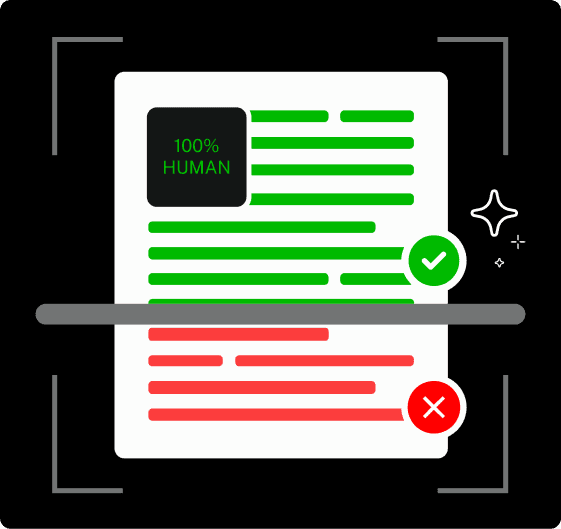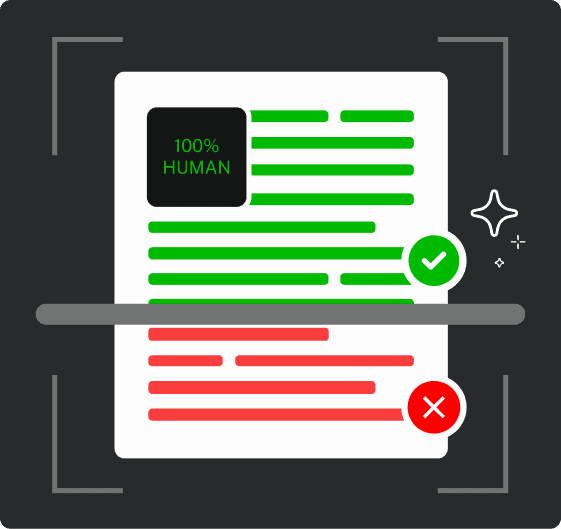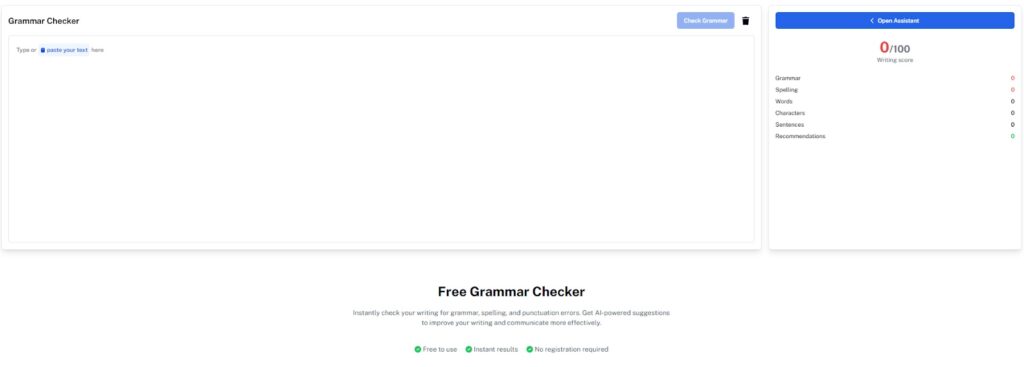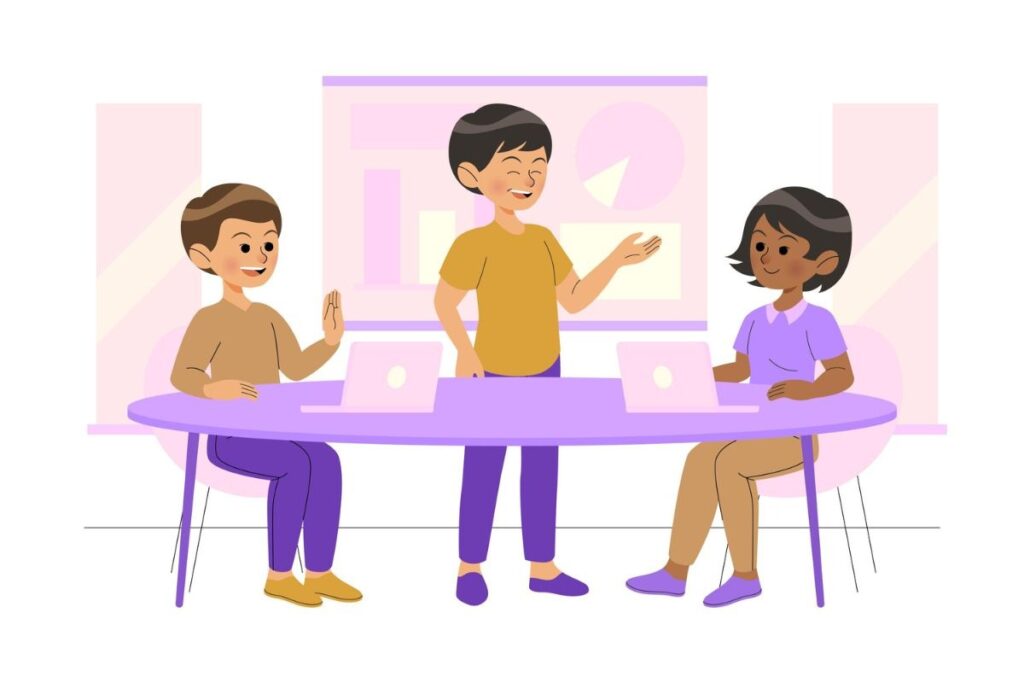Tenses are to verbs what algebra is to math.
Often blamed for confusion, misunderstanding, and fear, it’s seen by students and learners as one of the hardest parts of English grammar to grasp.
But everyone has to start somewhere. So we’ll begin with the simplest tense of them all: the simple present.
It’s the most straightforward of the bunch, with no timelines to juggle or complicated verb forms. Just the here and now and the things that happen regularly.
If you’re trying to nail your grammar homework or are brushing up on English basics, this guide breaks down everything you need to know about the simple present tense.
Key Takeaways
- The simple present tense describes actions that happen regularly, facts that are always true, or general statements about the world. It’s the most used tense in the English language.
- The simple present tense uses predictable patterns and spelling rules for affirmative statements, negative statements, and questions.
- Common mistakes include adding -s or -es to forms that don’t require it, or dismissing irregular verbs.
- Simple present is different from present continuous in that the present continuous uses “be” as an auxiliary verb to show actions that are happening right now.
What Is the Simple Present Tense?
The simple present tense describes actions that happen regularly, facts that are always true, or general statements about the world. It’s the most used verb form in English.
You’ll recognize it immediately. It uses the base form of the verb for most subjects, with one key exception: third person singular (he, she, it) gets an extra “-s” or “-es” at the end.
Here are some quick examples:


Never Worry About AI Detecting Your Texts Again. Undetectable AI Can Help You:
- Make your AI assisted writing appear human-like.
- Bypass all major AI detection tools with just one click.
- Use AI safely and confidently in school and work.
- I play tennis on weekends.
- Water boils at 100 degrees Celsius.
- She speaks three languages fluently.
- They live in downtown Chicago.
Notice how natural these sound?
That’s because the simple present tense is everywhere in English.
It’s your go-to for describing habits, routines, and permanent situations.
The simple present doesn’t just describe what’s happening right now. It covers things that happen repeatedly, facts that don’t change, and scheduled events in the future.
Pretty versatile for such a “simple” tense, right?
Simple Present Tense Formula (Affirmative, Negative, Questions)
Let’s break down the structure. The simple present follows predictable patterns once you know the rules.
Affirmative Statements:
Subject + Base Verb (+ s/es for third person singular)
- I work → She works
- You study → He studies
- We eat → It eats
Negative Statements:
Subject + do not/does not + Base Verb
- I do not work → She does not work
- You don’t study → He doesn’t study
- We don’t eat → It doesn’t eat
Questions:
Do/Does + Subject + Base Verb?
- Do I work? → Does she work?
- Do you study? → Does he study?
- Do we eat? → Does it eat?
The pattern stays consistent. The tricky part is remembering when to use “do” versus “does,” and when to add that “-s” ending.
Here’s the key: “Does” and the “-s” ending both go with third-person singular subjects (he, she, it, and singular nouns like “the cat” or “my sister”). For everything else, use “do” and the base verb form.
When to Use the Simple Present Tense

The simple present tense has several specific uses. Understanding these will help you choose the right tense every time.
1. Habits and Routines: Use the simple present for things you do regularly or repeatedly.
- I brush my teeth twice a day.
- She goes to yoga every Tuesday.
- They always order pizza on Friday nights.
2. Facts and General Truths: The simple present states things that are always true or widely accepted facts.
- The sun rises in the east.
- Dogs are loyal animals.
- Paris is the capital of France.
3. Permanent Situations: For situations that are stable or long-lasting.
- My brother lives in Seattle.
- She works as a software engineer.
- The library opens at 9 AM.
4. Scheduled Future Events: The simple present can describe future events that are scheduled or timetabled.
- The train leaves at 3:30 PM.
- Classes start next Monday.
- The meeting begins in an hour.
5. Sports Commentary and Instructions: You’ll hear the simple present in live sports broadcasts and step-by-step directions.
- Johnson passes the ball to Martinez.
- First, you heat the oil in a large pan.
- Click the save button to store your changes.
Need help with verb forms for your school projects?
Check out the Undetectable AI Ask AI tool, designed specifically for students to get assistance with grammar and writing assignments.
For quick grammar questions, try Undetectable AI’s AI Chat feature for instant answers.

Want to double-check your simple present sentences?
Our Grammar Checker can verify your verb forms and catch common mistakes before you submit your work.
Spelling Rules for -s and -es Endings
Third-person singular forms require special attention. The spelling changes depending on how the verb ends.
Add -s to most verbs:
- work → works
- play → plays
- read → reads
- sleep → sleeps
Add -es to verbs ending in -s, -sh, -ch, -x, or -z:
- pass → passes
- wash → washes
- watch → watches
- fix → fixes
- buzz → buzzes
For verbs ending in a consonant + y, change y to i and add -es:
- study → studies
- try → tries
- carry → carries
- worry → worries
For verbs ending in a vowel + y, just add -s:
- play → plays
- enjoy → enjoys
- stay → stays
- buy → buys
Irregular verbs have special forms:
- have → has
- be → is
- do → does
- go → goes
Practice with common verbs until the patterns become automatic.
Most English learners master these through repetition rather than memorization.
Common Mistakes With the Simple Present Tense

Even advanced English speakers make these errors. Recognizing them will help you avoid the same traps.
Adding -s to the wrong subject
✗ I works at a hospital.
✓ I work at a hospital.
Only third-person singular subjects (he, she, or it) take the -s. The first and second-person do not.
Using -s in negative sentences and questions
✗ Does he speaks Spanish?
✓ Does he speak Spanish?
When you use do or does, the base verb doesn’t change. The auxiliary already shows the tense.
Forgetting the auxiliary verb in questions
✗ What time the store closes?
✓ What time does the store close?
Questions in the simple present need do or does plus the base form of the verb.
Using the simple present for things happening right now
✗ I eat breakfast. (while eating)
✓ I’m eating breakfast.
The simple present is for routines or facts, not actions in progress. For right-now moments, use the present continuous.
Confusing irregular verb forms
✗ He haves two cats.
✓ He has two cats.
Some verbs don’t follow regular rules. Have becomes has in the third person singular.
Practice Sentences and Exercises
Let’s put this knowledge to work. Try filling in the blanks with the correct simple present form.
Exercise 1: Complete the sentences
- My sister ______ (work) as a teacher.
- We ______ (not/eat) meat.
- ______ you ______ (speak) French?
- The bus ______ (arrive) at 7:15 every morning.
- Children ______ (love) ice cream.
Exercise 2: Make these sentences negative
- I understand the lesson. → I ______ the lesson.
- She plays tennis. → She ______ tennis.
- They live nearby. → They ______ nearby.
- He watches TV every night. → He ______ TV every night.
- We know the answer. → We ______ the answer.
Exercise 3: Turn these into questions
- You work on weekends. → ______ on weekends?
- She studies French. → ______ French?
- The store opens early. → ______ early?
- They travel often. → ______ often?
- He likes coffee. → ______ coffee?
Answers:
Exercise 1: 1. works, 2. don’t eat, 3. Do/speak, 4. arrives, 5. Love
Exercise 2: 1. don’t understand, 2. doesn’t play, 3. don’t live, 4. doesn’t watch, 5. don’t know
Exercise 3: 1. Do you work, 2. Does she study, 3. Does the store open, 4. Do they travel, 5. Does he like
Simple Present vs Present Continuous
This distinction trips up many English learners, and for good reason.
Both tenses talk about the present, but they do it in very different ways. The key difference often comes down to auxiliary verbs and intention.
The simple present describes habits, facts, and routines. The present continuous, on the other hand, uses “be” as an auxiliary verb to show actions that are happening right now.
Simple Present:
- Habits and routines: I drink coffee every morning.
- Facts: Water freezes at 0°C.
- Permanent situations: She lives in Boston.
- Scheduled events: The flight departs at noon.
Present Continuous:
- Actions happening right now: I’m drinking coffee.
- Temporary situations: She’s living with her parents this month.
- Future plans: We’re meeting for lunch tomorrow.
- Changing situations: The weather is getting warmer.
Key differences:
The simple present suggests permanence or repetition. The present continuous implies temporariness or ongoing action.
Compare these pairs:
1. I work from home. (permanent job situation)
I’m working from home today. (temporary, just today)
2. She speaks loudly. (her general characteristic)
She’s speaking loudly. (right now, in this moment)
3. They live in Japan. (permanent residence)
They’re living in Japan for six months. (temporary arrangement)
The context usually makes the meaning clear. When in doubt, think about whether the action is permanent or repeated (simple present) or temporary and ongoing (present continuous).
For example, “They learn Japanese” suggests a regular activity, while “They’re learning Japanese” emphasizes what they are doing right now.
Just don’t forget that irregular verbs follow the same tense logic, even if their forms don’t play by regular rules.
Curious about our AI Detector and Humanizer? Try them in the widget below!
FAQs
Do all verbs take “s” in third person?
Not all of them. Regular verbs add “s” or “es” in the third person singular, but irregular verbs like “have,” “be,” and “do” have unique forms such as “has,” “is,” and “does.”
Modal verbs such as “can,” “should,” and “must” do not change at all, regardless of the subject.
Most verbs follow the standard rule, but it’s important to watch for common irregular ones.
What is the difference between simple present and past tense?
The simple present is used for habits, facts, and general truths, while the past tense describes actions that have already happened.
For example, “I walk to work” refers to a regular habit, while “I walked to work yesterday” describes a completed action in the past.
Time words often help clarify the tense. Words like “every day” or “usually” point to the present, while “yesterday” or “last week” signal the past.
Can I use the simple present for future events?
Yes, but only in certain cases. The simple present works for scheduled or timetabled events such as train departures, class times, or store hours.
You can say, “The train leaves at 4:30 PM” or “School starts next Monday.” For personal plans or predictions, use “will” or “going to.”
A sentence like “I visit my parents next weekend” sounds off. Instead, say “I will visit my parents” or “I’m visiting my parents.”
The simple present should be reserved for future events that are fixed and unlikely to change.
Stay in the Present
Mastering the simple present tense takes practice, but it’s worth the effort.
This tense forms the foundation of English communication, appearing in everything from casual conversations to formal writing.
Remember the key points: use the base verb form for most subjects, add “s” for third-person singular, and include “do” or “does” for negatives and questions.
With these rules in mind, you’ll use the simple present tense confidently in any situation.
If you need extra support, Undetectable AI offers a range of tools to help you practice, correct, and refine your grammar in real time with no stress and smarter writing.
